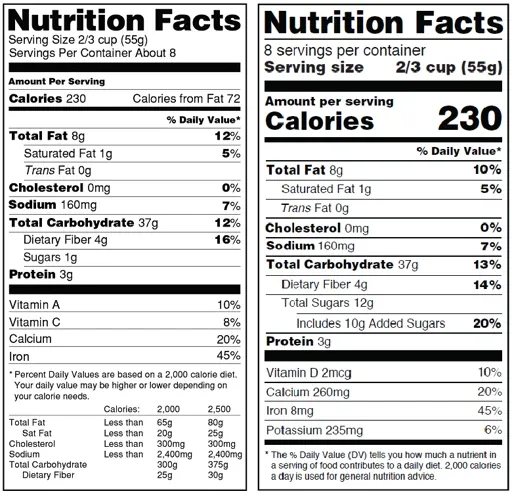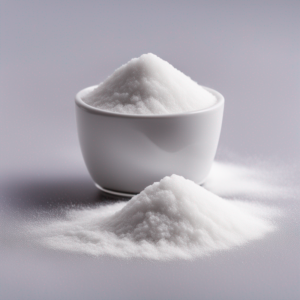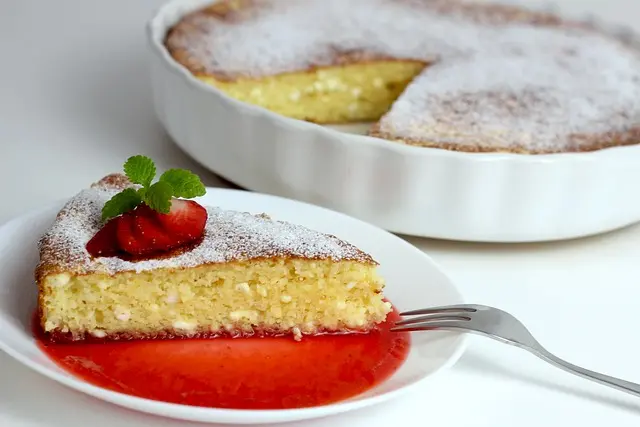Welcome back to The Vitamin Chica. Recently, I wrote about some natural sweeteners and we’re going to be sticking with that same topic on natural sweeteners and talk about sugar alcohols. Sugar alcohols are not sugar and they’re not alcohol either. They actually have a similar molecular structure to sugar and alcohol, so they decided to name this whole group of sweeteners sugar alcohols.
Sugar alcohols are carbohydrates and they occur naturally in small amounts in fruits and vegetables. When you buy it commercially or when there are products on the market that contain sugar alcohols, most of the time they extract the sugar and starches from natural fruits and vegetables and then they go through a fermentation process that makes them identical to the sugar alcohols naturally occurring in fruits and vegetables. That’s why technically they are natural. Because they’re extracted from natural fruits and vegetables and then they go through a fermentation process, so it is not chemically processed and, then, sugar alcohols are a natural sweetener.
One of the reasons that sugar alcohol is more popular these days is because it’s about half the calories of regular sugar. The reason it is about half the calories is because sugar alcohols, when they go through our intestines, don’t get completely absorbed, so we end up with fewer calories. Well, because they don’t get completely absorbed in our intestines, that means if we eat too many sugar alcohols, we’ll have some tummy issues like gas, diarrhea or some bloating. Another reason why sugar alcohols are so popular is because it’s a great alternative for diabetics. It doesn’t give them that sugar spike and affects their blood glucose less significantly.
There are different ways to find out how much sugar alcohol a product has if it contains sugar alcohol. If you know some of the names of the sugar alcohols, then you’ll see them listed in the other ingredients or you can see in the nutritional facts panel. Right under the added sugar line, you’ll have a line that says sugar alcohol and how many grams. Now, let’s talk about four of the most common sugar alcohols. I’m going to talk about mannitol, sorbitol, xylitol and isomalt.

Mannitol
Mannitol is a sugar alcohol primarily made from sugar beets, and sugar beets are not the typical red beets that we think about. Sugar beets look like this:

Mannitol is about 50 to 60 percent as sweet as sugar and approximately 50% of the calories of sugar. It has sweetness but it also has a cooling effect on your mouth. It is used mostly with chewing gum, candy, they make chocolate coating out of it, they make fast dissolve tablets out of it, and just like all sugar alcohols don’t eat too much because you’ll have some gastrointestinal issues.
For mannitol, it’s about 20 grams max, and you know, everyone’s built differently, so just monitor how many grams of mannitol or other sugar alcohols you’re taking in and then see where you fit.
Sorbitol
Sorbitol is a sugar alcohol primarily made from potato starch. It is about 40 percent less sweet than sugar and it contains about 65 percent of the calories of sugar. Another great thing about sorbitol is that it’s great for your teeth: it prevents cavities. Sorbitol is usually used for cakes and cookies because of its smooth texture. Also, sorbitol has been used as a laxative. If you’re constipated, you take seven to fourteen grams per day and it can help you out, Remember, the maximum amount of sorbitol you should take a day is 50 grams, so you shouldn’t really go over that.
Xylitol
Xylitol is a sugar alcohol primarily made from birchwood. It looks and tastes just like sugar and it only has five percent less of the sweetness of sugar and 60% of the calories. It has been known to stop the bacteria in your mouth, so that means you have less plaque and less cavities. They have also studied that it helps to reduce the amount of ear infections, because the same bacteria that’s in your mouth, also kind of builds in your ears, and it causes certain types of ear infections. Similar to sorbitol, the maximum amount of xylitol you should have is about 50 grams.
Isomalt
Isomalt is a sugar alcohol that’s primarily made from sugar beets, similar to mannitol. Isomalt is about 40% the sweetness of sugar and about forty percent its calories. Isomalt is used a lot in combination with high intense sweeteners like sucralose, ace k or stevia. When you combine isomalt with these high intense sweeteners, it acts like a masking agent, because high intense sweeteners usually have some type of aftertaste. Isomalt is also used a lot in baking. They like to make molds out of them because isomalt is really resistant to high heat, and also, when you heat it up, it stays clear. This is a cake that they made snowflakes out of isomalt. I thought this was really cool. They actually sell molds that you can make different molds with isomalt.

I’m leaving links below for all the different sugar alcohols I talked about here today. Maybe you want to make some isomalt molds or bake something. If you like this article, make sure you share it with friends. Don’t miss my article about some artificial sweeteners. For today that’s it, from me, The Vitamin Chica.
Products:
- Mannitol Powder Bag (250 grams (8.8oz)): https://amzn.to/37Bb8gq
- Sorbitol Powder (250 grams (8.8oz)): https://amzn.to/3aDwj3p
- Xylitol Powder Bag (250 grams (8.8 oz)): https://amzn.to/3sd91Hy
- Isomalt Powder Bag (454 grams (16oz)): https://amzn.to/3umBqNi
- Isomalt Sugar Work Starter Kit – Silicone Mat, Measuring Cup, Spatulas, Isomalt Crystals, Desiccant, Thermometer, Gloves – 9 Items Perfect for Working with Isomalt: https://amzn.to/37DP8lc
